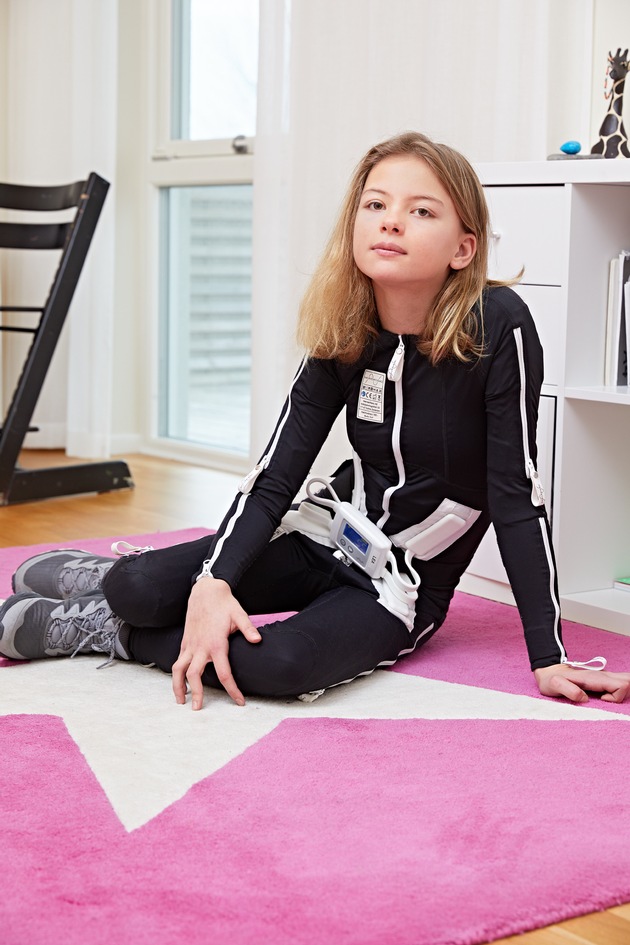Electrostimulation suit to reduce spasticity
On 13 January, Ottobock acquired Exoneural Network, a Swedish startup that developed the innovative Exopulse Mollii Suit. The garment covers the entire body and uses electrical impulses to relax tense or spastic muscles. This effect can improve the mobility for people with spasticity. It helps them lead a more active, dignified life.
Electrostimulation suit to reduce spasticity: Ottobock integrates Startup
The Exopulse Mollii Suit can improve mobility for people affected by a stroke or Parkinson’s disease
On 13 January, Ottobock acquired Exoneural Network, a Swedish startup that developed the innovative Exopulse Mollii Suit. The garment covers the entire body and uses electrical impulses to relax tense or spastic muscles. This effect can improve the mobility for people with spasticity. It helps them lead a more active, dignified life.
By acquiring all the shares in Exoneural Network, international medtech company Ottobock is expanding its portfolio in the promising field of neuro-orthotics: “Alongside expanding treatment options for our users, we aim to maximise the synergies between the startup’s technology and our orthotic fittings,” says CEO Philipp Schulte-Noelle. “The acquisition is a perfect fit for our strategy to address muscular disorders in neuro-orthotics. We will now be working to integrate the company into the Ottobock family with the team of new colleagues from sales, research and development.” Exoneural Network will continue to oversee development and production, while Ottobock is taking over global distribution of the product and opening up the market for the technology.
How does the Exopulse Mollii Suit work?
The single-piece suit is equipped with 58 imbedded electrodes, which professionals adjust to the user’s individual needs via a control unit. The low-frequency electrostimulation improves blood circulation and restores the previously inhibited balance between muscles pairs. If, for example, the bicep is tensed, the suit stimulates the tricep, which in turn causes the bicep to relax. As such, the technology works in a complementary way to functional electrical stimulation (FES), in which nerves are stimulated with small electrical impulses in order to trigger movements.
Who is the Exopulse Mollii Suit intended for?
Tense or stiff muscles, muscle pain or uncontrolled muscle twitches occur as a result of spastic paralysis and other neurological movement disorders. They are caused, for example, by stroke, cerebral palsy, Parkinson’s disease or multiple sclerosis. The Exopulse Mollii Suit can also support successful rehabilitation following severe brain injuries, as evidenced by testimonials such as that of former ski cross athlete Anna Holmlund of Sweden. Following her accident, the suit helped her partly regain her mobility.
How does this work in practice?
Kevin Weber from Germany, one of the suit’s users, shares his successes with a public audience. The young man has Parkinsonism, which frequently caused his entire body to shake. His muscles cramp due to the neurological disorder, which is painful and makes it difficult to do simple things like walking and eating. A video accompanying the press release shows how the Exopulse Mollii Suit works: After an hour of wearing the suit, Kevin can walk significantly better without shaking. “I can finally dream about going back to work again,” he says.
Further information at www.exopulse.com
Maja Hoock
Public Relations Managerin
Ottobock SE & Co. KGaA, Prenzlauer Allee 242, 10405 Berlin
Handy: +49 151 18883507
E-Mail: maja.hoock@ottobock.de

